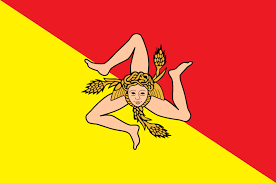Difference between revisions of "Language/Sicilian/Grammar/Articles"
Jump to navigation
Jump to search
| Line 12: | Line 12: | ||
Happy learning! :) | Happy learning! :) | ||
==Rule== | ==General Rule== | ||
Articles in the Sicilian language are divided into 2 categories: | Articles in the Sicilian language are divided into 2 categories: | ||
| Line 18: | Line 18: | ||
# definite: '''lu''', '''la''', '''li''', (the) and indefinite '''nu''', '''na''' (a, an). These articles, like the nouns they describe, have a gender, they can be feminine: '''la''' (singular), '''li''' (plural), and masculine: '''lu''' (singular), '''li''' (plural). | # definite: '''lu''', '''la''', '''li''', (the) and indefinite '''nu''', '''na''' (a, an). These articles, like the nouns they describe, have a gender, they can be feminine: '''la''' (singular), '''li''' (plural), and masculine: '''lu''' (singular), '''li''' (plural). | ||
# The indefinites '''nu''', masculine, '''na''', feminine are always singular. | # The indefinites '''nu''', masculine, '''na''', feminine are always singular. | ||
==Examples== | ===Examples=== | ||
{| class="wikitable" | {| class="wikitable" | ||
!Sicilian | !Sicilian | ||
| Line 41: | Line 41: | ||
|a woman | |a woman | ||
|} | |} | ||
==Exceptions== | |||
For nouns that start with a '''z''' or with an '''s''' followed by a consonant the form '''nu''' of the indefinite article should be used: | |||
tab1 | |||
In the spoken language these articles can be contracted to: | |||
* '''â''' for '''la''' | |||
* '''î''' for '''li''' | |||
* '''û''' for '''lu''': | |||
tab2 | |||
Revision as of 11:39, 20 November 2022
Sicilian Grammar ➡ Articles
Hello everybody,
In today's lesson you will learn how to use Articles in Sicilian.
Feel free to edit this page if you think it could be improved!
Happy learning! :)
General Rule
Articles in the Sicilian language are divided into 2 categories:
- definite: lu, la, li, (the) and indefinite nu, na (a, an). These articles, like the nouns they describe, have a gender, they can be feminine: la (singular), li (plural), and masculine: lu (singular), li (plural).
- The indefinites nu, masculine, na, feminine are always singular.
Examples
| Sicilian | English |
|---|---|
| Lu cavàddu | the horse |
| La casa | the house |
| Li cavàddi | the horses |
| Li casi | the houses |
| Un cavàddu | a horse |
| Na fìmmina | a woman |
Exceptions
For nouns that start with a z or with an s followed by a consonant the form nu of the indefinite article should be used:
tab1
In the spoken language these articles can be contracted to:
- â for la
- î for li
- û for lu:
tab2
